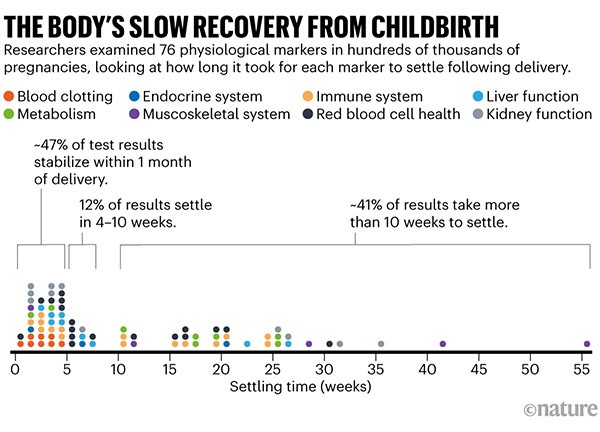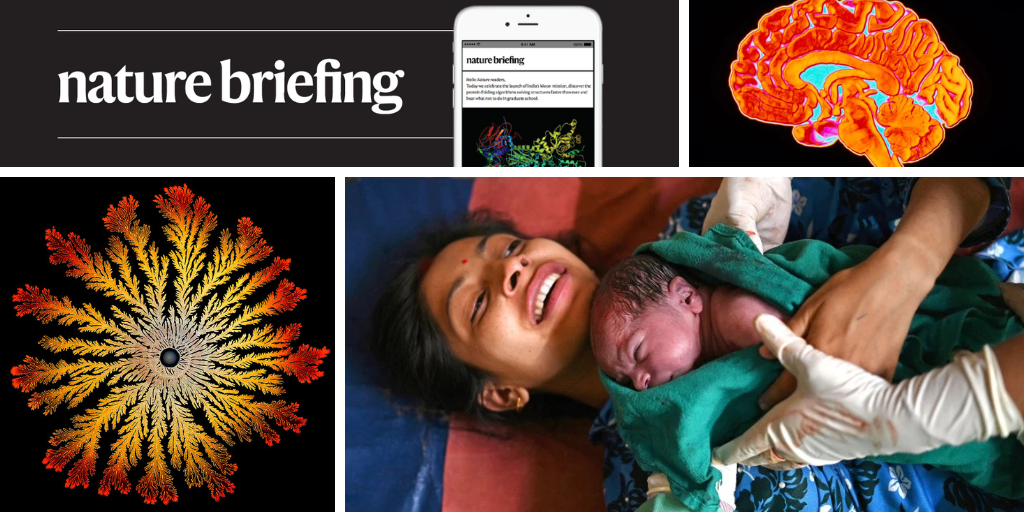You have full access to this article via your institution.
Hello Nature readers, would you like to get this Briefing in your inbox free every day? Sign up here.

A species of Paenibacillus bacteria has potent antibacterial activity against some pathogenic bacteria such as Escherichia coli.Credit: Clouds Hill Imaging Ltd/Science Photo Library
Researchers searching far and wide for new antibiotic molecules have discovered one in their own backyard. The new molecule — found in soil samples collected from a lab technician’s garden — targets a broad range of disease-causing bacteria and doesn’t appear to be toxic to human cells. From the soil samples, the team spotted a lasso-shaped molecule they named lariocidin, which is produced by Paenibacillus bacteria. Lariocidin attaches to structures called ribosomes in bacteria, which disrupts their protein production. The molecule slowed the growth of a range of common bacterial pathogens, including many multidrug-resistant strains.
Scientists have produced the first map of how mitochondria — the cell’s energy-making factories — are distributed in the human brain. The team used a woodworking tool to divide a slice of frozen brain into 703 tiny cubes and determine the density of mitochondria in each. They used the brain-cube data to develop a model to predict the numbers and types of the organelles across the entire brain. The map reveals differences in the type and density of mitochondria in different brain regions. For example, grey matter, which is composed of the compact central structures of neurons, contains 50% more mitochondria than does white matter, which is primarily composed of neurons’ long, message-carrying branches. and also generates energy much more efficiently.
For the first time, physicists have observed a particle of matter in the proton family behave fundamentally differently to its antimatter twin, which could help to explain why matter is so abundant in the Universe compared with antimatter. Researchers spotted subtle differences between the decay rates of a particle called the beauty-lambda baryon and its antimatter counterpart into other products. The findings fit with behaviours predicted by the standard model of particle physics, but provide a new hunting ground to look for unknown causes of the imbalance.
Reference: arXiv preprint (not peer reviewed)
Three-quarters of the 1,600 US scientists who responded to a Nature poll say that they are considering leaving the United States following the disruptions prompted by the administration of President Donald Trump. Europe and Canada were among the top choices for relocation. The trend was particularly pronounced among early-career researchers who chose to fill in the survey. “This is my home — I really love my country,” says a graduate student at a top US university who works in plant genomics and agriculture. “But a lot of my mentors have been telling me to get out, right now.”
Infographic of the week

A gigantic study of the results of physiological tests taken before, during and more than a year after pregnancy reveals the scale of the toll that carrying a baby and childbirth take on the body. Several measurements — including a marker for inflammation and several indicators of blood health — settled but did not return to their pre-conception levels even after 80 weeks, when the study ended. (Nature | 5 min read)
Reference: Science Advances paper
Features & opinion
Artificial intelligence (AI) tools are making their way into the process of peer review — sometimes with publishers’ encouragement, and at other times in violation of their rules. A glut of products offer to go beyond the basics — checking grammar, for example — to ‘assist’ the reviewer with tasks such as finding relevant references, or flagging vague feedback. Some developers aim to create AI tools that can write the whole review from start to finish — an idea many researchers object to. “I submit a manuscript for review in the hope of getting comments from my peers,” says ecologist Timothée Poisot, who spotted telltale signs that a review he received had been run through a chatbot. “If this assumption is not met, the entire social contract of peer review is gone.”
Family-led care plans can overcome some of the barriers older adults face in accessing health care, says behavioural health researcher Shahmir Ali, but only if family members are empowered with the skills and knowledge they need to help their loved ones. Small studies have shown that digital platforms can help to educate family carers on making healthy changes to their loved ones’ diet. To scale such insights into useful outcomes, funders should support research that explores how to integrate family-engagement models into health-care systems, and governments must be prepared to translate the evidence of such research into policies.
Today I’m listening to a shark ticking. Yes, you did read that right. Researchers in New Zealand recorded a type of hound shark called a rig (Mustelus lenticulatus) making a clicking noise in a tank — the first evidence that sharks can make noises. The sound is of a higher frequency than the shark can probably hear, so it doesn’t seem to be trying to communicate with other animals. It stopped making the noise after being in the tank for a while, so it might have been a nervous tic, the researchers say.
Help us keep this newsletter ticking along by sending your feedback to [email protected].
Thanks for reading,
Jacob Smith, associate editor, Nature Briefing
With contributions by Flora Graham
Want more? Sign up to our other free Nature Briefing newsletters:
• Nature Briefing: Careers — insights, advice and award-winning journalism to help you optimize your working life
• Nature Briefing: Microbiology — the most abundant living entities on our planet — microorganisms — and the role they play in health, the environment and food systems
• Nature Briefing: Anthropocene — climate change, biodiversity, sustainability and geoengineering
• Nature Briefing: AI & Robotics — 100% written by humans, of course
• Nature Briefing: Cancer — a weekly newsletter written with cancer researchers in mind
• Nature Briefing: Translational Research — covers biotechnology, drug discovery and pharma


